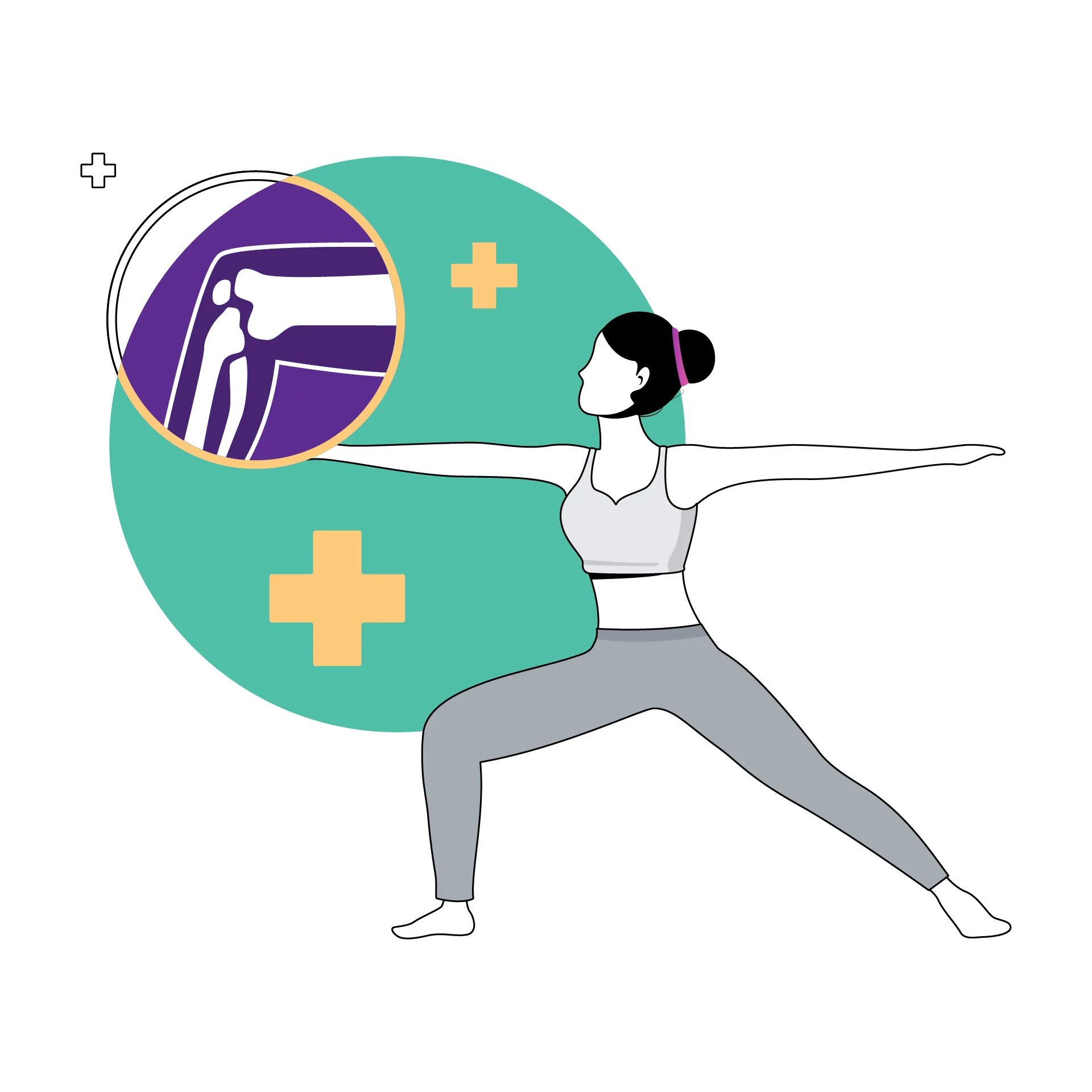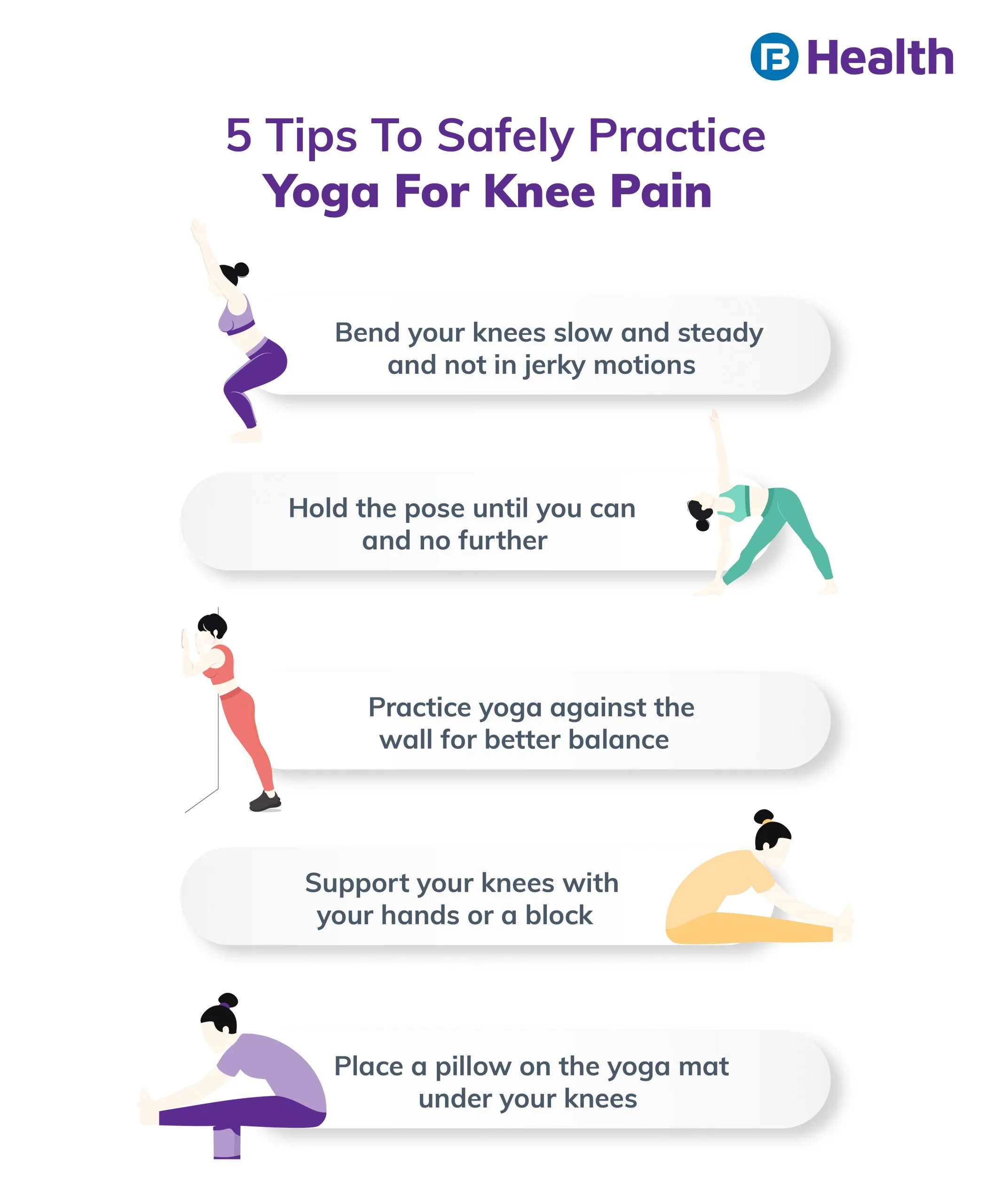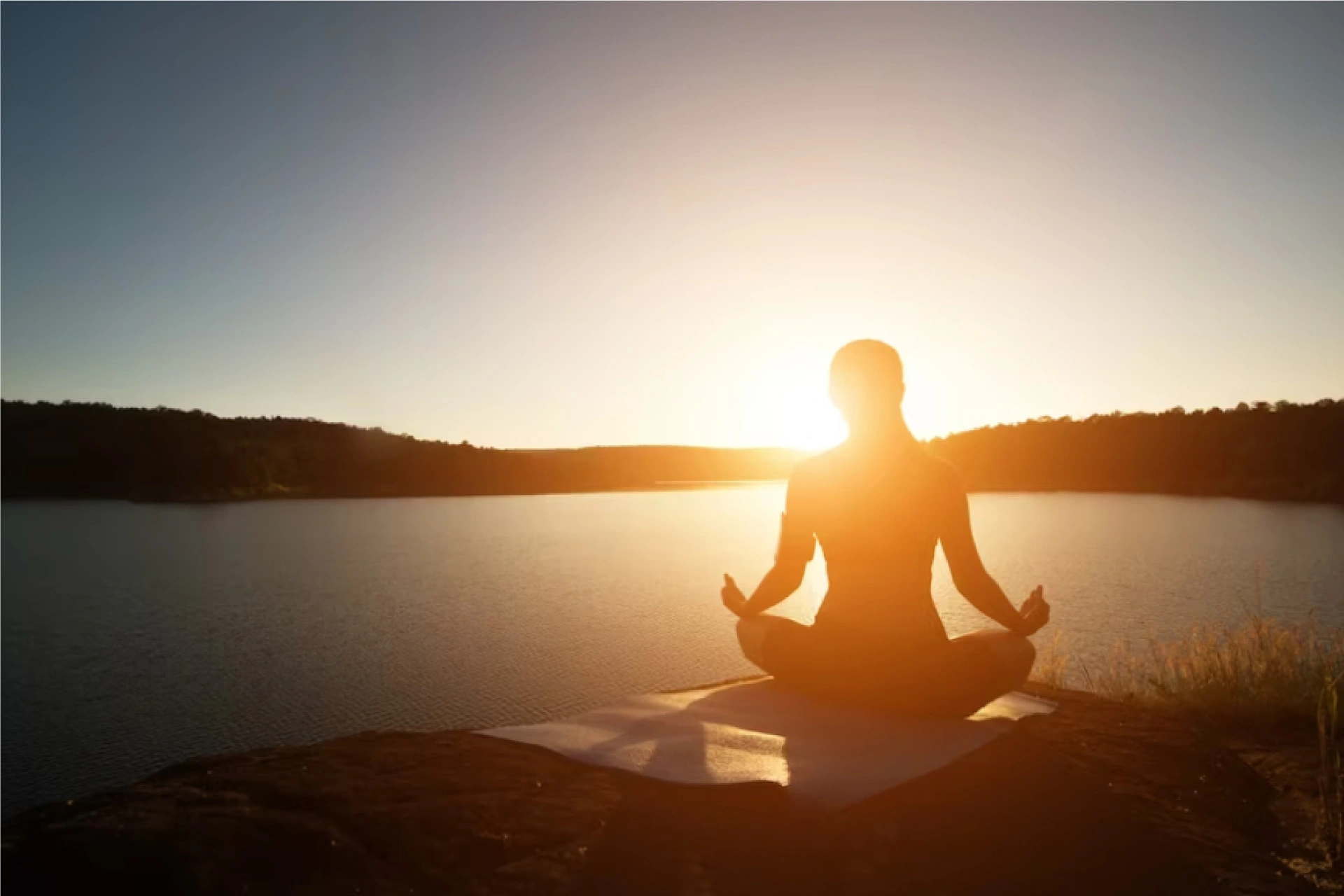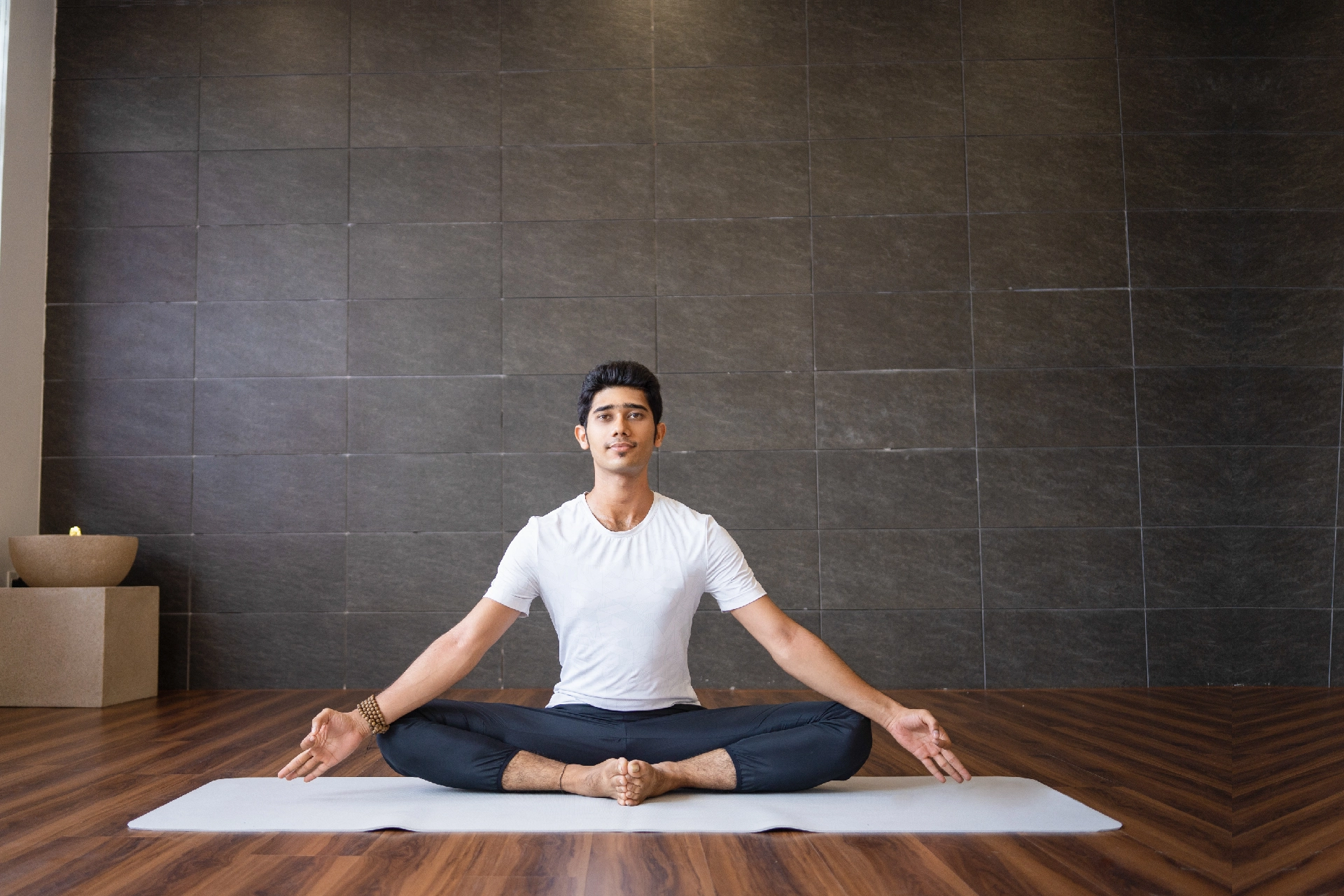Physiotherapist | 7 min read
Yoga for Knee Pain: 5 Important Poses and Benefits
Medically reviewed by
Table of Content
Synopsis
Address knee pain proactively or it may be a precursor to arthritis and other conditions. Yoga for knee pain relief is an effective way to boost knee and joint health.
Try yoga to strengthen knees!
Key Takeaways
- Doing yoga for knee pain benefits your joints and bone health
- Effective yoga asanas for knee pain include the bridge and chair poses
- Yoga for knee pain strengthens your muscles and improves your posture
If you are struggling with your weak knees due to age or injury, practicing yoga for knee pain relief can do wonders. Knee pain can also make walking difficult for you as it affects the joints and tissues surrounding this complex joint. To tackle this and walk or be active as much as you want to, practicing poses of yoga for knee pain is an effective remedy.
In Ayurveda, yoga poses for knee pain are considered the best way to manage pain, improve your movement and restore your body’s balance. If you don’t treat knee pain and the reason behind it, you may suffer from serious conditions like arthritis. The best way to avoid this naturally is by doing yoga for knee pain relief and strength. Read to know the useful yoga poses for knee pain and their benefits.
Benefits of Doing Yoga For Knee Pain Relief
If you are suffering from persisting knee pain, you should consult a doctor and immediately treat your knee joints. You will require a few essential nutrients to maintain your joint health. When your body lacks those nutrients, you may experience health conditions like arthritis and muscular dystrophy. To treat these diseases, an orthopedic may prescribe several medicines and pain killers.
One way to reduce your knee pain and arthritic symptoms and maintain your joint health and physical function naturally is by practicing yoga regularly [1]. Yoga for knee pain restores your normal joint movements and decreases your pain. Your knee joint area has cartilage and muscles in the surrounding area. Injuries or pain in those tissues can also affect your knee joints’ motion. Yoga asanas for knee pain strengthen these muscles and the cartilage to enhance your knee health, flexibility, and function [2].
Practicing yoga for knee pain also maintains the flow of synovial fluid in your knee, which is important for your joint movement. This helps to release the stiffness in your joints, and circulating this fluid in the knee reduces friction for better movement. You can practice a few poses of yoga to strengthen your knees right at home and get relief from excruciating knee pain naturally.

Yoga Poses for Knee Pain Relief:
1. Bridge Pose
This pose stretches your torso and strengthens your knees and glutes. It expands your chest and stretches your shoulders, which allows you to maintain your balance on your feet and with the top of your head. Do this pose of yoga for knee pain relief with these steps.
- Sit with your knees bent and turn your body to lie on your back
- Maintain your legs hip distance apart and keep your feet flat on the yoga mat
- Shift your feet towards your hips, so your fingertips touch your heels or hold your ankles if this is comfortable
- Breathe in and lift your hips and thighs up to the ceiling
- Balance the pose by rolling your shoulders back and holding your back with your hands for support
- Ensure that your thighs are parallel to the floor and you lift your glutes higher
- Make sure your chest doesn’t sink down but is open and up, and maintain the pose for a minute
- Slowly relax your hands on the floor and bring down your hips to the mat to release the pose
2. Chair Pose
This pose of yoga to strengthen knees works on building the muscles around your knees. It stretches your thighs and glutes in a way that regulates your joint health. Follow these steps to perform this easy pose of yoga for knee pain relief.
- Start by standing straight with your toes touching or a little apart and bending your knees.
- Bring your hips down and bend your chest forward.
- Make sure to keep your feet firm on the mat with your weight on your heels and inhale deeply.
- Relax your glutes and concentrate on your thigh muscles to balance yourself
- Get your thighs to be as aligned to the floor as possible until you achieve a pose that is similar to sitting on a chair.
- Extend your arms upwards, parallel to your ears, and hold the pose
- To release the pose, relax your arms and bring your hips up until you are in the original standing position.

3. Warrior Pose
There are three types of warrior poses practiced in yoga for knee pain relief. Among these, the first pose is beginner-friendly. Warrior pose can improve your knee stability and balance. It focuses on a 90-degree bend of your knee that strengthens your joint muscles. You can develop pelvic stability if you practice this pose regularly. Follow these steps to do this pose of yoga for knee pain.
- Begin by standing erect on your feet in front of your mat
- Place your left foot away behind you with your entire foot on the mat and bend your other knee.
- Now turn the toes of your left foot by 45 degrees.
- Make sure your right knee doesn’t protrude over your heel but is at a right angle to your body, and your hips are aligned and straight.
- Breathe in and take your arms up over your head and join them in a namaste
- You can arch your back a little and look up at your hands.
- Hold this pose for a minute.
- Return to the normal position by lowering your arms, getting your left leg back, and straightening into the standing position
4. Child’s Pose
When you do the child’s pose, you tend to put pressure on your knees, and this helps reduce pain in your hips, core, and back. This, in turn, relieves your knee pain and benefits the muscles around it by stretching them. Practice this as one of the poses of yoga for knee pain relief by following these steps.
- Start by sitting on your mat on your knees.
- Widen your knees to reach the yoga mat’s width or spread them even farther
- Slowly lean forward while expanding your chest rather than sinking in and place your hands in front of you so they touch the mat.
- As your stomach touches your thighs, try to touch your hips to your heels.
- Lay your forehead on the mat and feel the stretch
- Maintain this for a minute before you inhale and raise your head up to return to the original position
5. Mountain Pose
This is the simplest and the easiest asana of yoga for knee pain respite. Standing straight during the pose helps you become aware of your body and focus on your knees. Doing this pose protects your knees by stretching your knee and leg muscles. You can do this pose while keeping your feet together and firmly pressing them on the floor in these steps.
- Stand straight and tense your thigh muscles, stretching them up and inwards
- Make sure your knee caps lift up too
- Tighten your core a little
- Roll your shoulders back and look straight ahead
- Make sure your chest is open and up
- Look at a fixed place to maintain your balance
- Take deep breaths, and then relax your muscles to release the pose
Your knees are crucial to doing a yoga posture correctly. When you practice yoga to strengthen your knees, avoid straining your joints. Being aware of your body can help you prevent knee injuries when you do this yoga poses for knee pain relief. To get more insight into doing yoga to strengthen knees, book an appointment on Bajaj Finserv Health with top naturopaths and yoga experts. This way, you can also get advice on ways to add facial yoga as well as yoga for thyroid or spring yoga poses to create a comprehensive yoga routine.
On the Bajaj Finserv Health platform, you can also get a doctor consultation with a general physician or other specialists to address all your health concerns from the comfort of your home. These proactive measures can help you prioritize your health with ease, so download the app now!
References
- https://www.ncbi.nlm.nih.gov/pmc/articles/PMC6081169/
- https://www.frontiersin.org/articles/10.3389/fpsyt.2018.00180/full
Disclaimer
Please note that this article is solely meant for informational purposes and Bajaj Finserv Health Limited (“BFHL”) does not shoulder any responsibility of the views/advice/information expressed/given by the writer/reviewer/originator. This article should not be considered as a substitute for any medical advice, diagnosis or treatment. Always consult with your trusted physician/qualified healthcare professional to evaluate your medical condition. The above article has been reviewed by a qualified doctor and BFHL is not responsible for any damages for any information or services provided by any third party.



